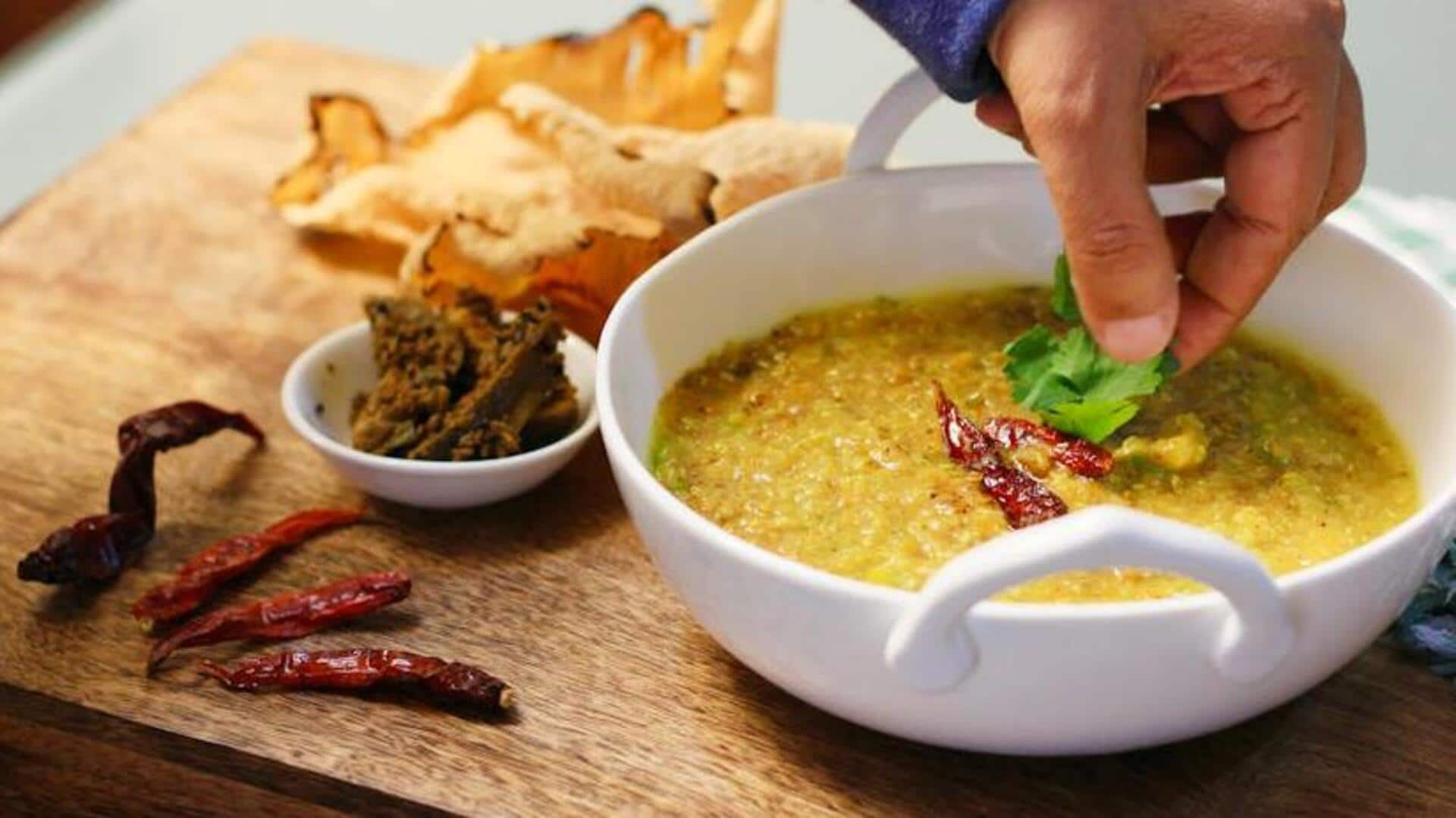
Cook this traditional Gujarati khichdi at home
What's the story
Khichdi, a staple in Gujarati cuisine, embodies simplicity and comfort. Originating from the Indian subcontinent, this vegetarian and eggless meal has been a source of nourishment for centuries. Its versatility makes it suitable for both everyday meals and ceremonial occasions. Rich in cultural relevance and easy to prepare, khichdi truly exemplifies the beauty of traditional Indian cooking. Let's get cooking.
Ingredients list
Gather the following ingredients
To make traditional Gujarati khichdi, gather one cup rice, one-half cup moong dal (split yellow lentils), four cups water, one teaspoon turmeric powder, salt to taste, two tablespoons ghee (clarified butter), one teaspoon cumin seeds, five curry leaves, optional two cloves minced garlic, one inch minced ginger, and two slit green chilies. Garnish with chopped coriander leaves.
Step 1
Preparing rice and lentils
Start by thoroughly rinsing the rice and moong dal under running water until it becomes clear, effectively removing any impurities and excess starch. This initial step is essential. Then, soak both ingredients together in water for about 30 minutes, which significantly speeds up their cooking time. After the soaking period, ensure to drain off all the water completely using a colander.
Step 2
Cooking with spices
In a heavy-bottomed pot or pressure cooker, heat two tablespoons of ghee on medium flame. Add cumin seeds and let them sizzle for a few seconds until they release their aroma. Follow this by adding curry leaves, minced garlic (if using), ginger, and green chilies. Saute these ingredients for about two minutes or until they start to brown slightly.
Step 3
Combining ingredients
Add the drained rice and lentils to the sauteed spices in the pot. Stir to ensure even coating with ghee and spices. Pour in four cups of water, turmeric powder, and salt to taste. In a pressure cooker, cover and cook for three whistles on medium flame. If using an open pot, simmer until soft, ensuring a perfect consistency.
Step 4
Final touches
Once the khichdi is cooked, check for a mushy consistency. It should be perfectly soft, neither too dry nor too watery. At this stage, if necessary, adjust its consistency by carefully adding hot water. Give it one final gentle stir, mixing everything well together. Aim to maintain the integrity of the grains without breaking them much, ensuring the ideal texture and homogeneity.